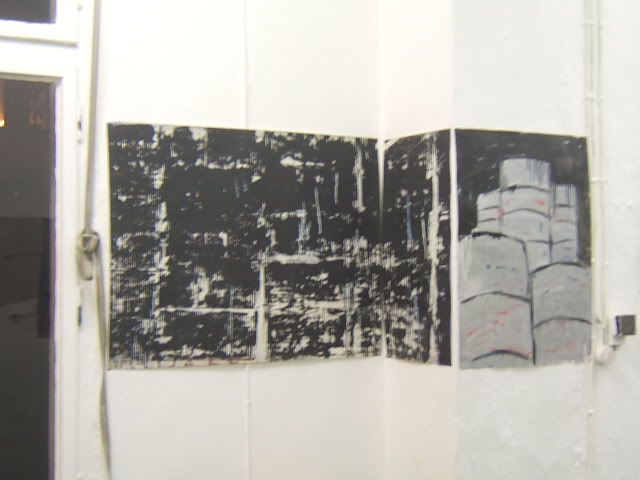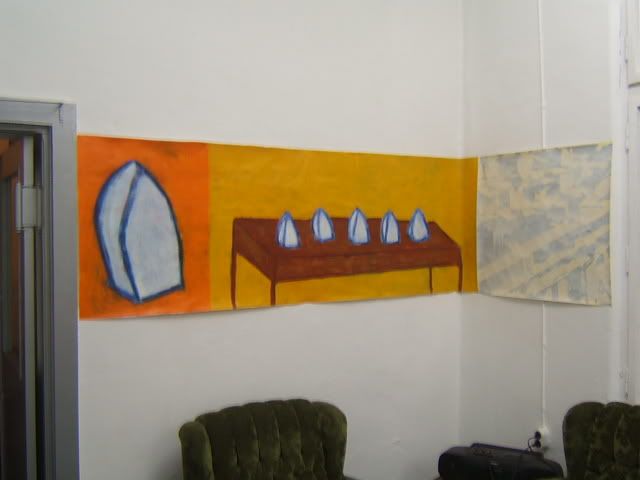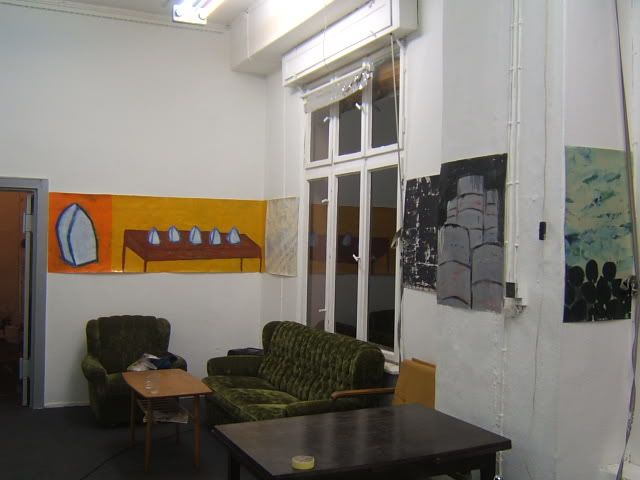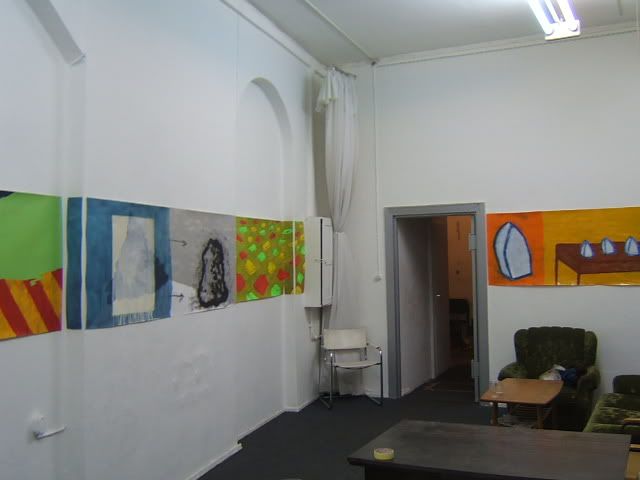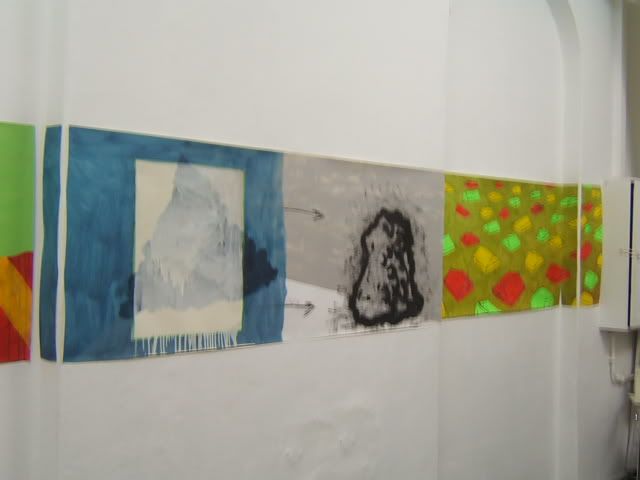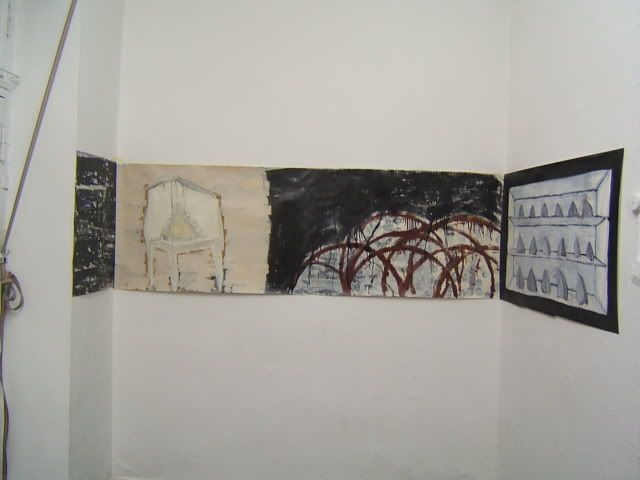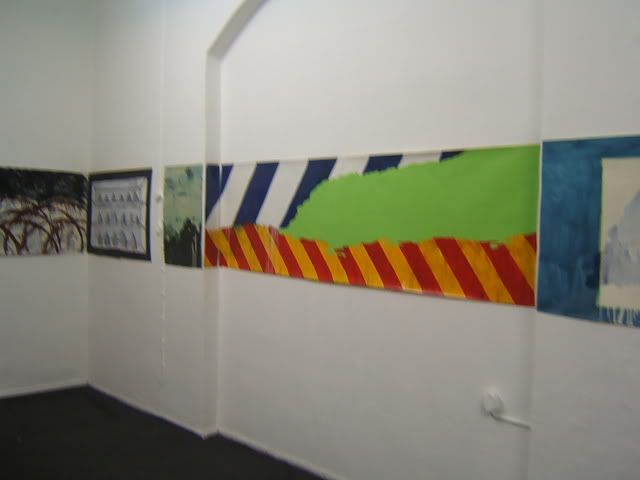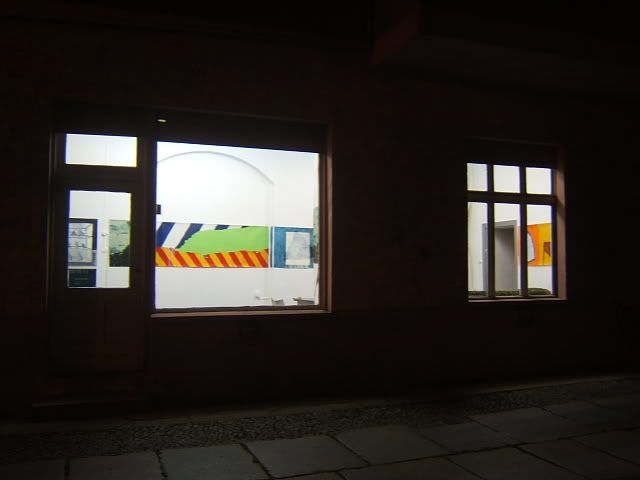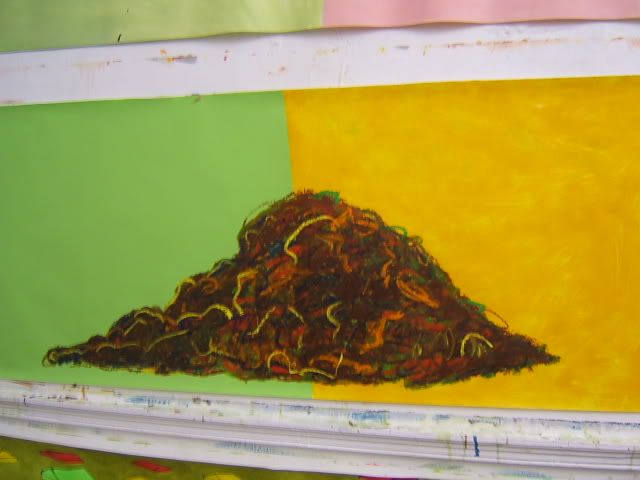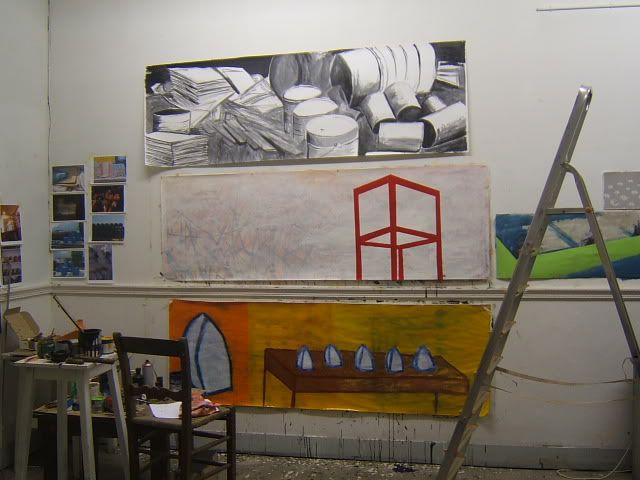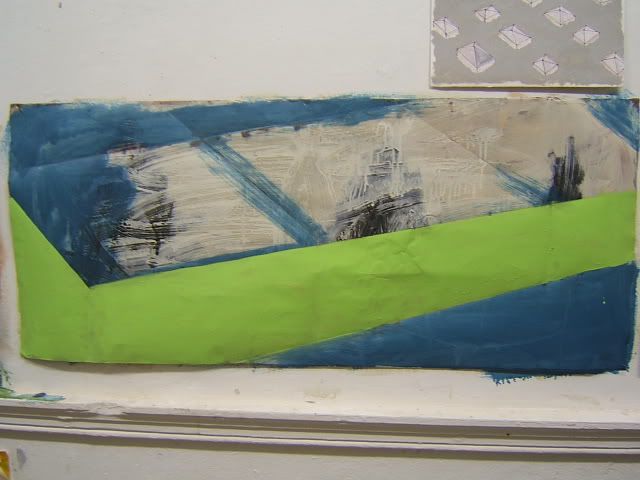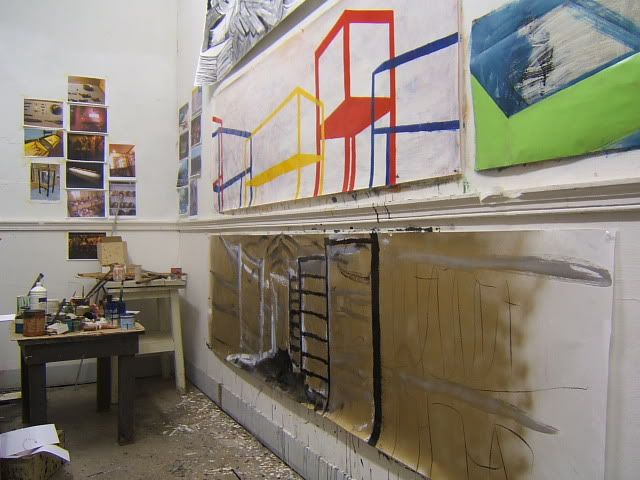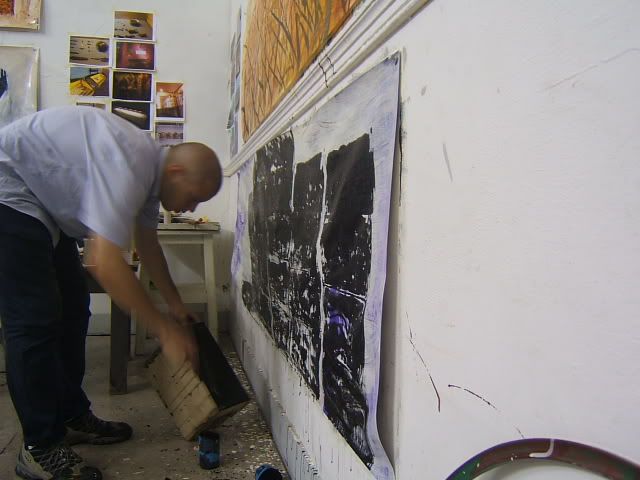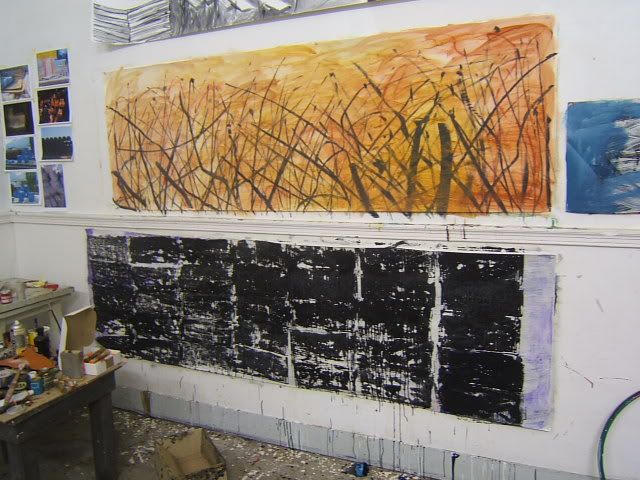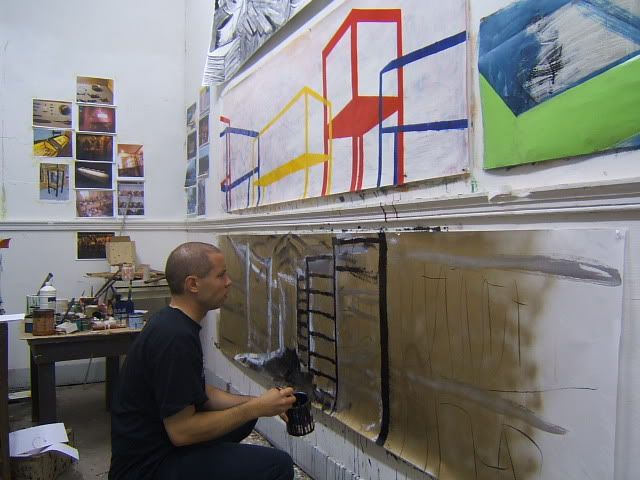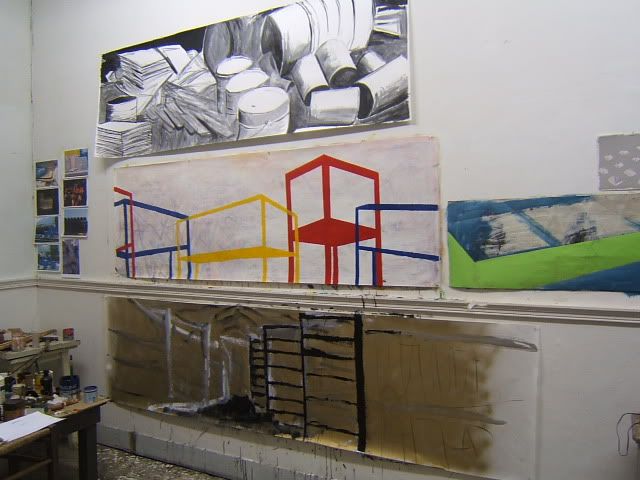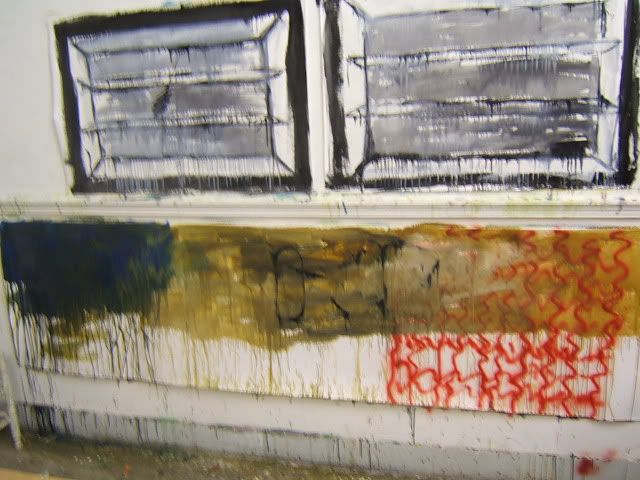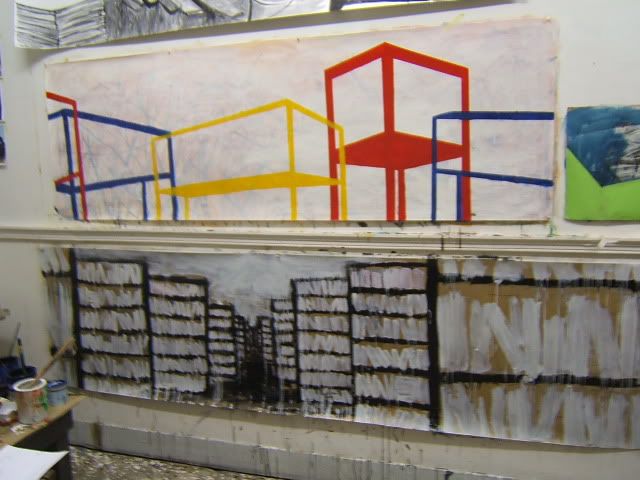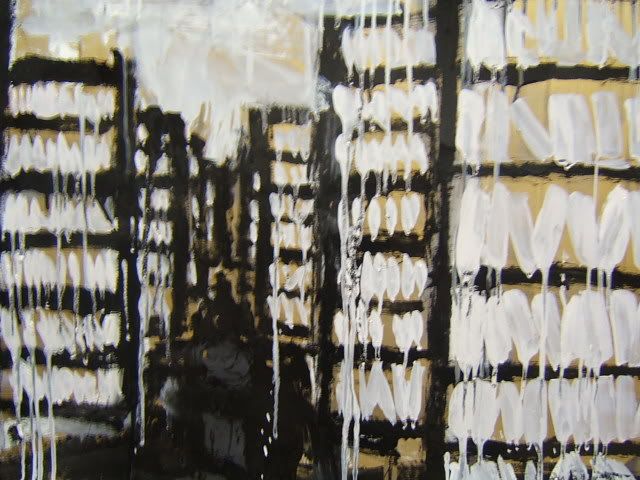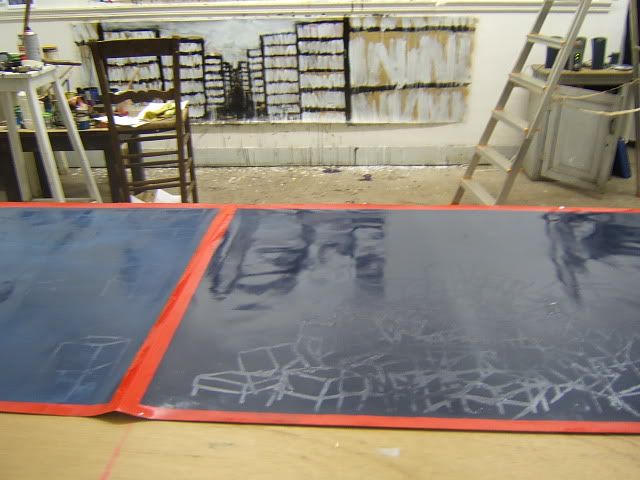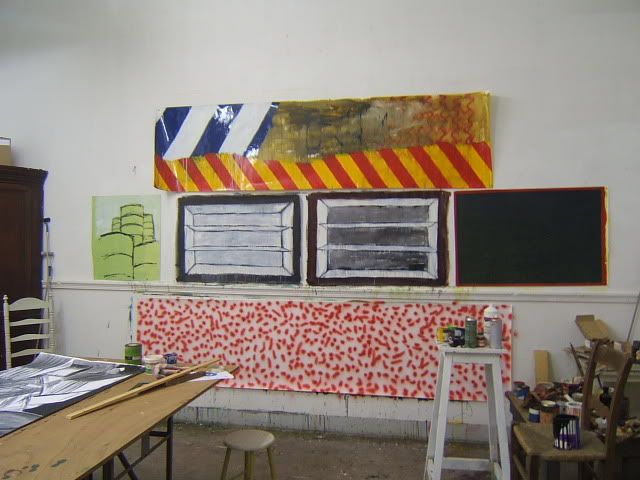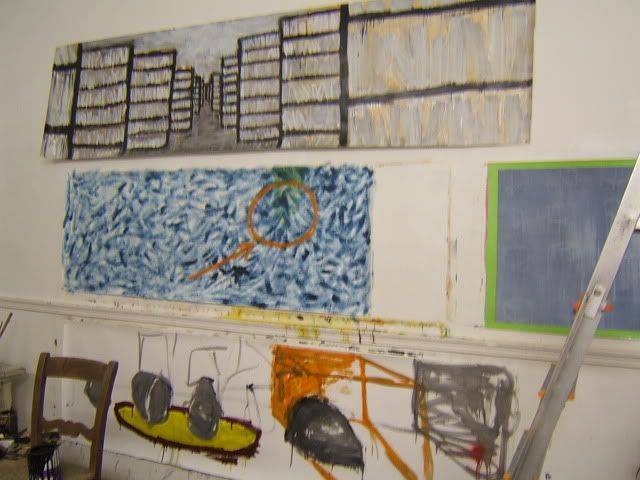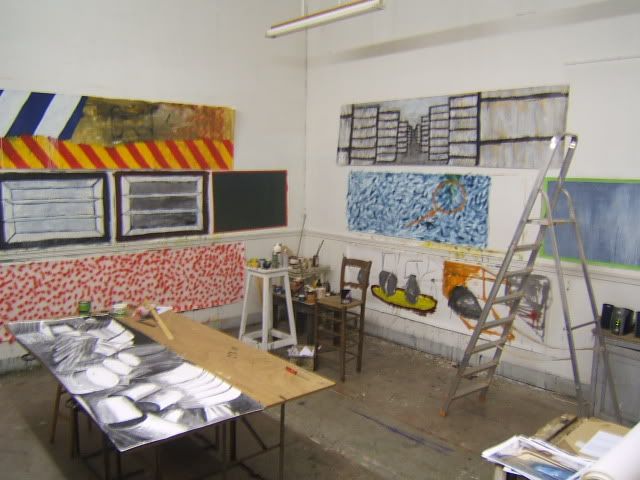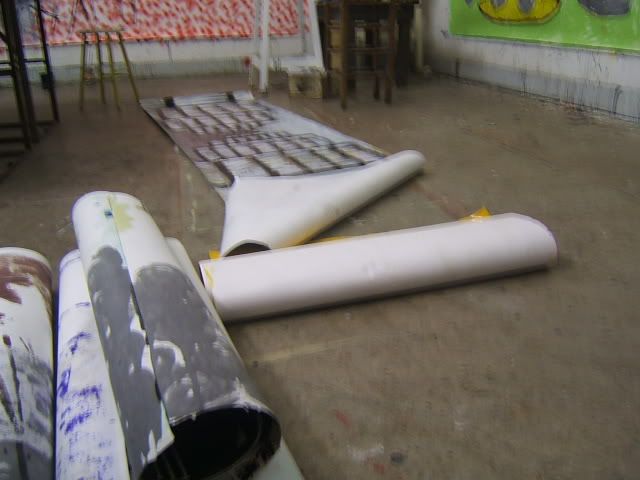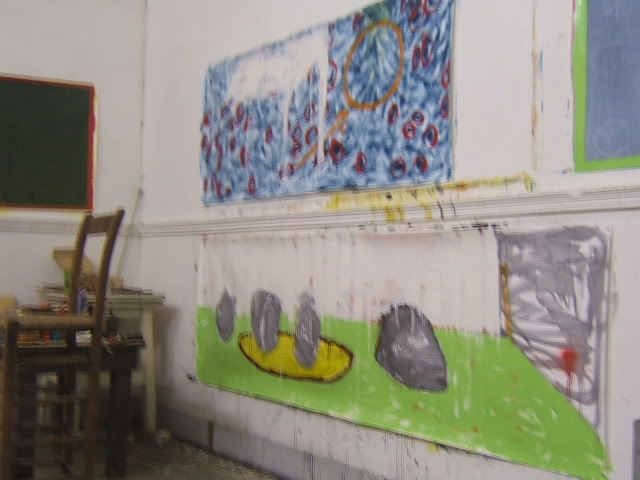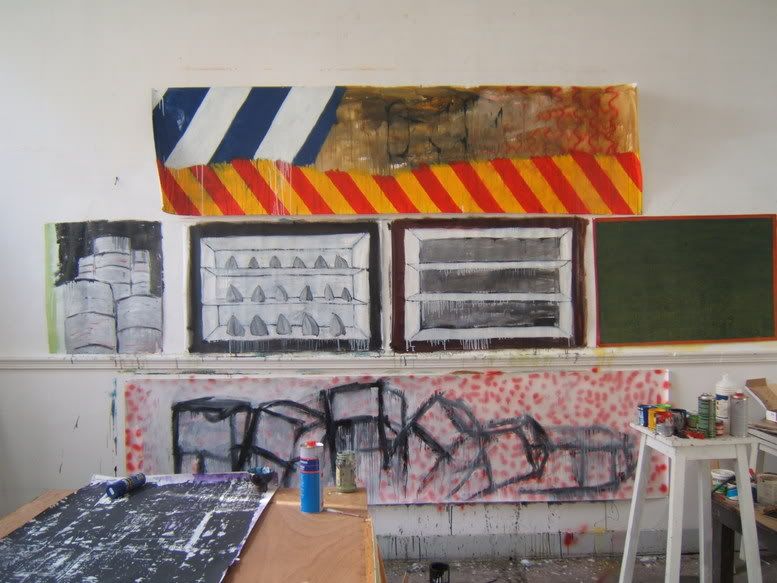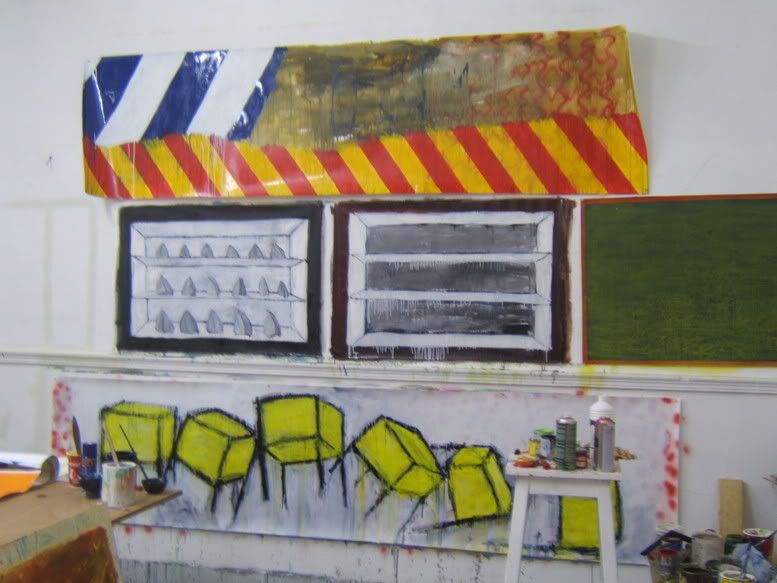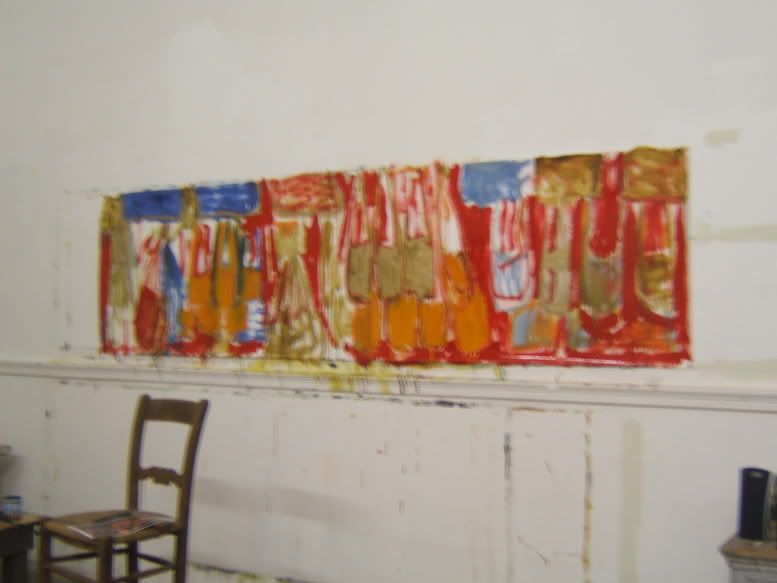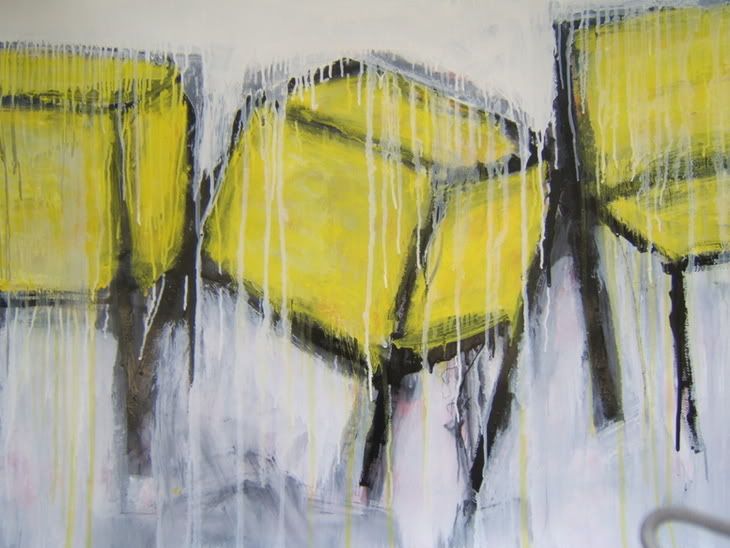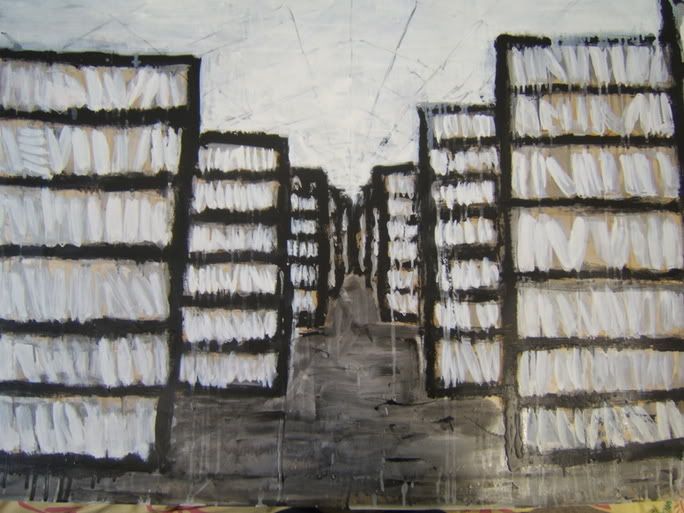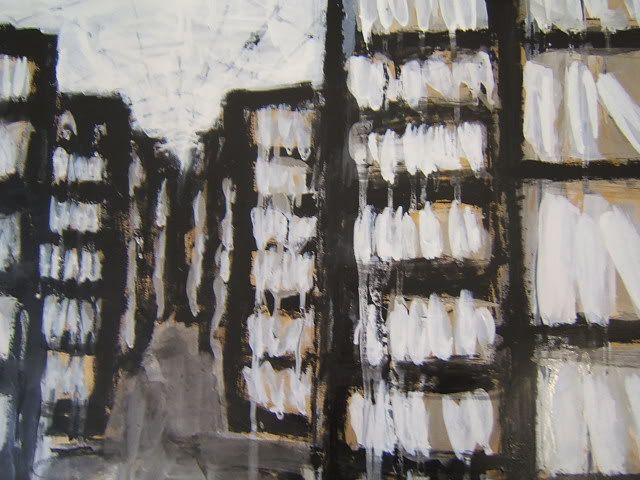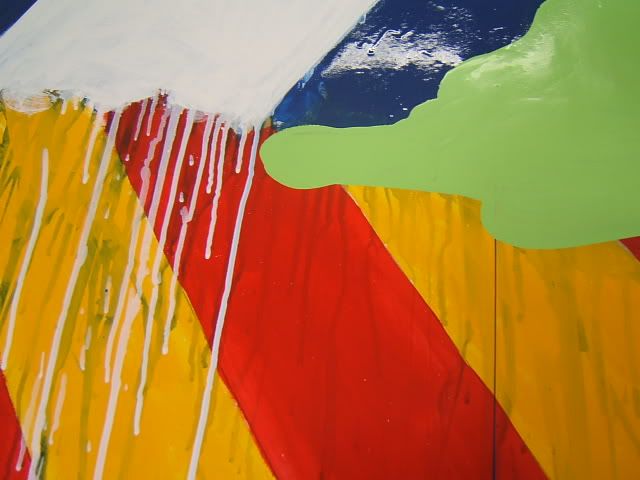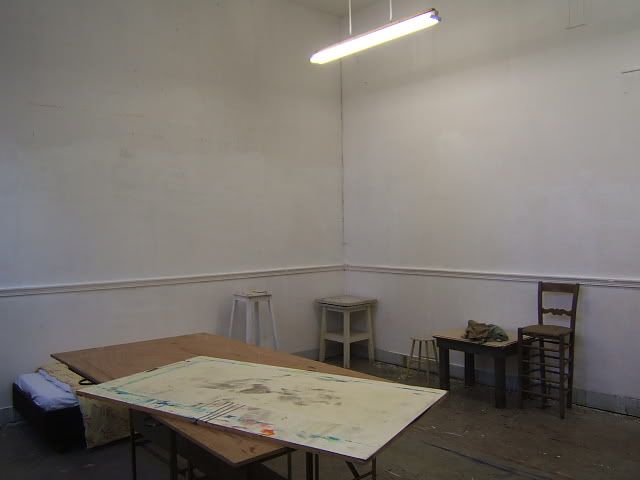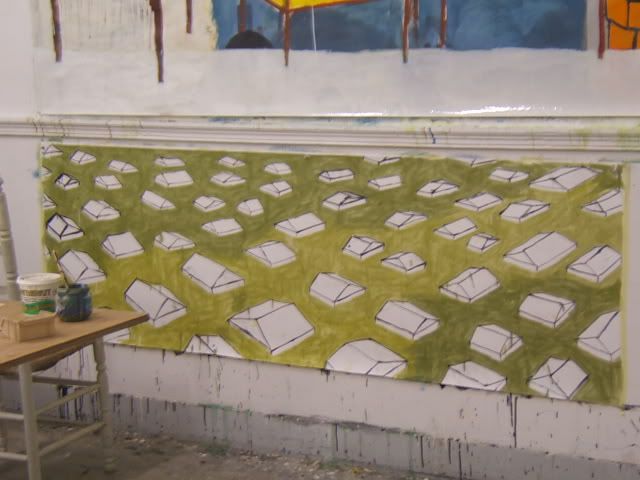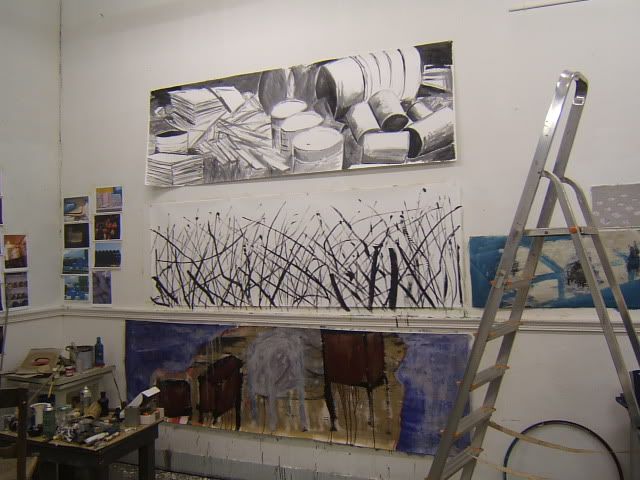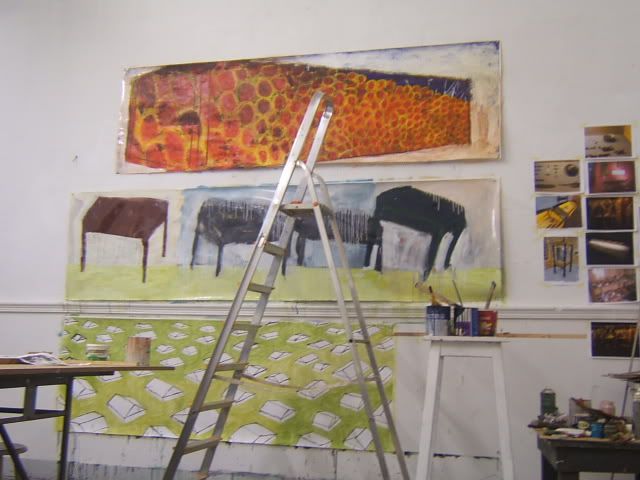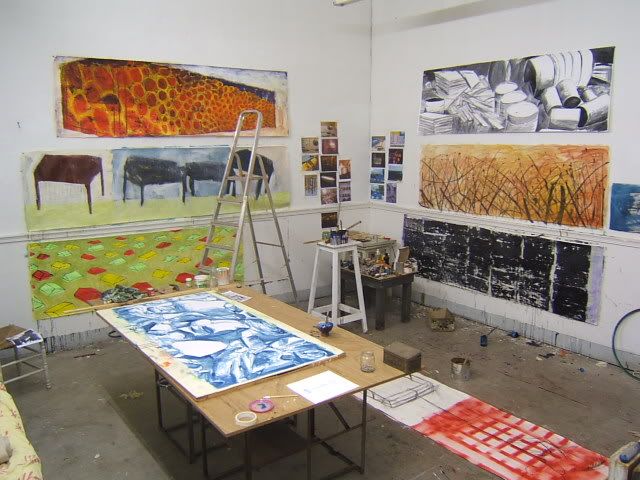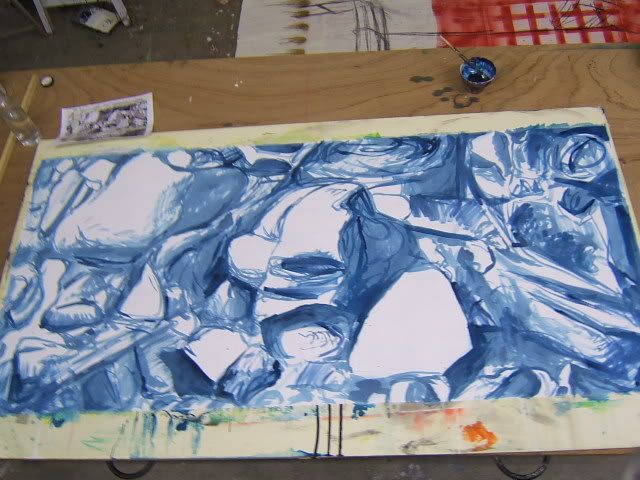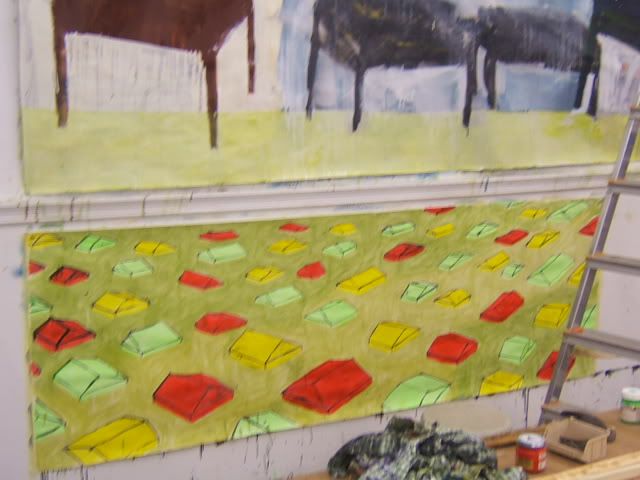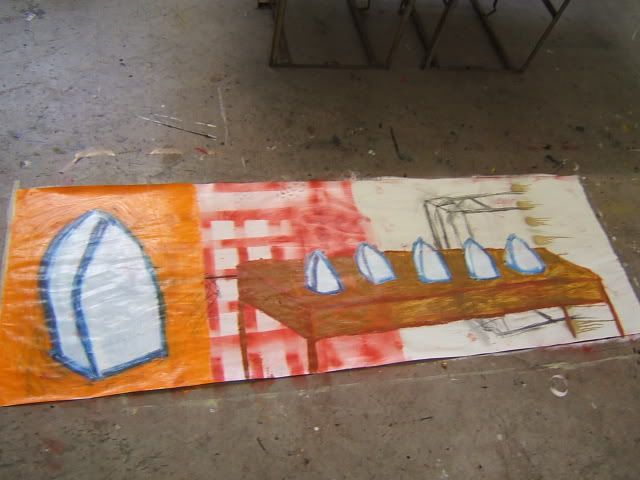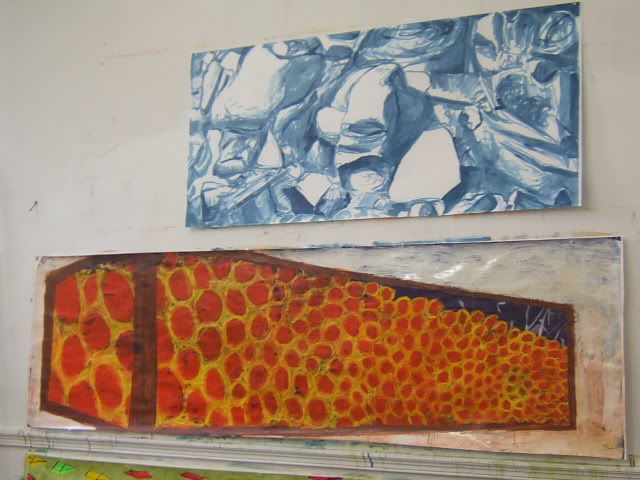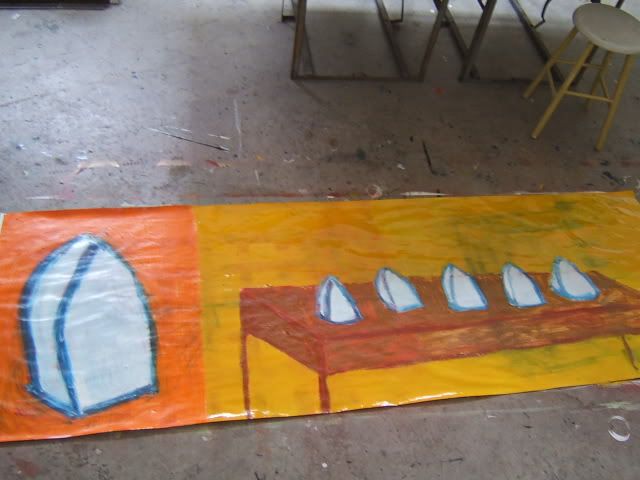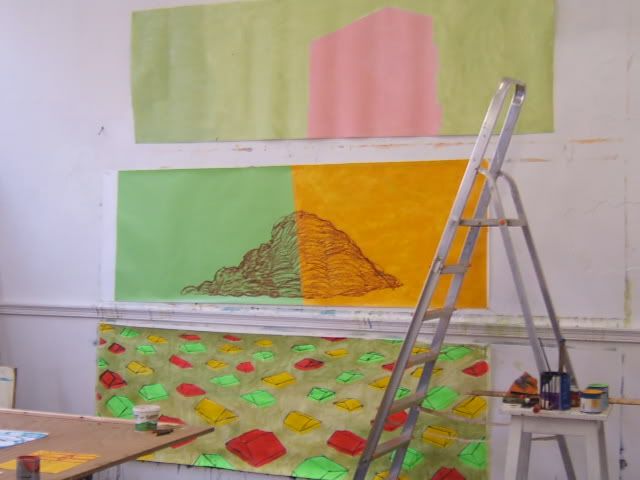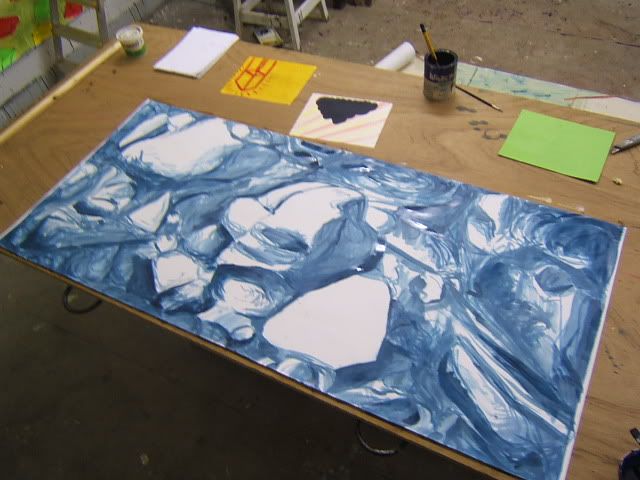After four days in Berlin (which were mind-blowing, I'll detail those in another post) I met Ancz from
KunstOffice and began to install the show. I had heard about this from a colleague from undergrad,
Amze Emmons, who knew of them, and somehow we were about to work it out for when I was going to be there. So, the work was installed on Wednesday, the opening was on Friday, from which I left from immediately to fly back home.
The space itself was quite nice- right on the old border between east and west, on the edge of the Mitte area. Ancz and Peter, who opened and run the space, were able to get it from the people who own it very cheaply- the space was previously unused and run-down, so they were happy to let them clean up and use the space, which fir their criteria of having wall space and large windows, so the work could always be seen. They leave the lights on at night (see the bottom two photos) for this reason.
The installation itself went smoothly, though I was glad I had made (and brought) as much as I did. The walls had niches in them that made some pieces, like the case of red and yellow blobs, unworkable- I was okay with cutting some down, particularly the ones that were more all-over patterns like the New Orleand houses, but some couldn't be cut to fit, so they were left out. So with Ancz's help I figured out which ones should butt up against others, which would work best seen from the windows, etc. It took about fours hours, to sort, trim and hang everything, which didn't seem too bad but was kind of stressful- I would have liked to have done it alone, it was a little weird to have an audience to the decision making. Sort of like my thesis show at Indiana, having various people help me out, but I was also busy trying to direct them, but also having to make on-the-spot decisions about things I didn't count on happening.
The opening went okay, a small amount of people were able to make it, which wasn't bad, as their openings are usually on Saturdays and run late, and I had to leave at 7pm.
